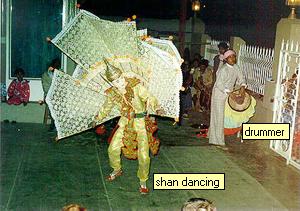LAJJA author Taslima of bangladesh who is in exile in India.
I strongly urge the indian govt to grant her request in the tradation of India from time immemorial starting from parsis to jews of kerala to dalailama .
this is the excerpt from rediff interview
"Bangladesh needs a revolution: Taslima
April 21, 2007 14:04 IST
"I think this is temporary. I would like to think this is the beginning of a change. But who would come to power? The same old political parties who are pro-fundamentalist, who use Islam for their own interests to get votes from the ignorant masses," Nasrin told Karan Thapar in the CNN-IBN programme 'Devils' Advocate'.
"They would come to power and they would never allow me to go to my home country," she said.
Nasrin said nothing short of a revolution was needed in Bangladesh.
Asked about an editor of a Bangladeshi newspaper recently writing that her rights should be reinstated, the author said, "It's wonderful... But it is only one lonely voice."
Nasrin, who has been living in exile for the last 12 years and is currently residing in India, said this country has to be her home in the foreseeable future.
The author, who has invited the ire of the Muslim clergy and fundamentalists over her anti-Islamic views as also her explicit style of writing, said she would love to live in India.
Nasrin, who has requested the Indian government to grant her citizenship, was asked if she felt unsafe in India due to the warnings issued by Muslim organisations, and she said, "It's not safe, but I love to live in India. And I would like to live in India if I got the chance."
Asked if she did not fear she could get killed here, Nasrin said, "That can happen anywhere in the world. Fundamentalists are everywhere in the world...I was thrown out of Bangladesh. And when I was living in Europe, I got security. But still fundamentalists could kill me there."
Sticking to her critique of Islam, Nasrin, who first created a storm with her book 'Lajja', "There is no equality between man and woman in marriage, divorce, child custody and inheritance in Islam."
She, however, said it was not just Islam that she had a problem with. "I criticise Islam and I also criticize Christianity, Judaism. I criticise Hinduism because women are oppressed by all religions."
Nasrin said, "Religion itself is against women. It's not only the fundamentalists. Religion was actually created by men for their own interests."
Asked to react to the criticism that her writings were aimed at grabbing attention through cheap titillation, she said, "I don't need publicity. It's a dangerous thing to say.
The fundamentalists issued a fatwa against me, set a prize on my head. I couldn't live in my own country. I have had to live in exile for more than 12 years."
Nasrin said she was only telling the truth and wanted to make women conscious about their rights and freedom.
"I don't want any religious law. I don't want any patriarchal system," she said."
